The north Red Sea is famous for shipwrecks. These wrecks discovered their end during passage out of the Suez Canal. While the wrecks have tragic stories; these wrecks are now incredible dive locations covered in coral and marine life.
Learn more about some of the wrecks that are explorable across the Red Sea.
How to Visit the Red Sea Wrecks
The best way to visit the Red Sea wrecks is through a liveaboard. For some of the wrecks, a liveaboard will be the only way to visit.
The scattered wrecks of the Red Sea have their resting grounds near a variety of coral pinnacles. These unexpected coral pinnacles are the reason most ships met their doom in the Red Sea.
Red Sea liveaboards leave out of two major cities in Egypt: Hurghada and Sharm El Sheikh. You can board a liveaboard at Hurghada or Sharm El Sheikh for a multi-day cruise on a northern Red Sea itinerary. The northern route of the Red Sea is what you let you explore many wrecks in the Red Sea.
There is also the option of a day trip to the most famous wreck, SS Thistlegorm. Yet, this will involve approximately 3 hours one-way travel to read the wreck.
Find a liveaboard visiting the Red Sea at the popular liveaboard website.
Can you snorkel the wrecks?
Due to the location, and depth, the Red Sea wrecks are not available for snorkelers. The Red Sea wrecks are only accessible by divers as a majority lie at about 20-30m in depth.
Why are there so many wrecks in the Red Sea?
The wrecks of the Red Sea all had a similar fate, other than one, the Thistlegorm.
Once in the open water of the Red Sea, ship crews, and captains, thought the voyage safe. This was due to the assumption that navigating the Suez Canal was the most dangerous. Once relaxing in the “open” Red Sea, these ships ran into hidden coral pinnacles that are abundant in the Red Sea.
The damage created by boats running adrift onto the coral pinnacles sank the boats. Fortunately, the sinking of the boats was so slow that crewmembers escaped the wrecks.
Ships running into coral reefs became so common that a reef is famously called “Seven Deaths Reef“. This reef earned the name after seven different ships met their doom by running into the reef. All the ships actually impacted along the same side and slowly piled up in the bottom. Despite seven wrecks at this reef, there are only three wrecks that are still diveable at the reef now. The older wrecks have disappeared into the ocean sinking deeper and deeper. But Seven Deaths Reef shows the history of poor navigating ships in the Red Sea.
SS Thistlegorm
The best reason to visit the wrecks of the Red Sea: SS Thistlegorm. The SS Thistlegorm has become internationally famous and is one of the best wreck dives in the world.
The reason the Thistlegorm is so famous is the preservation of all the cargo on the inside. While wreck diving the Thistlegorm, divers can see such items as: motorbikes, propellers, trucks, and racks of rifles. There is an assortment of equipment on the Thistlegorm growing rust and coral.
This is wreck can be difficult to dive due to strong currents. It will also be the busiest dive site while exploring the wrecks of the Red Sea. But, no trip to the Red Sea should not include the Thistlegorm.
How Thistlegorm Sank
In June 1941, The SS Thistlegorm departed for her final voyage to deliver Allied supplies. The final destination of the Thistlegorm was to be Alexandria, Egypt. The SS Thistlegorm had to change routes to avoid German and Italian wartime activity in the Mediterranean. The route went around Cape Town, South Africa instead of through the Mediterranean. ⠀
Meanwhile, German intelligence learned of a large troop transport destined for the area. The boat they were looking for was the Queen Mary carrying 12,000 Australian troops.
Two German planes launched from Crete in search of the troop carrier. Now, in October 1941, the SS Thistlegorm anchored itself outside the Suez Canal. ⠀
The two German bomber planes were unable to find the Queen Mary. These planes, running low on fuel, opted to drop their payload (the bombs) on the largest vessel moored at the Suez Canal. Of 14 other ships in the area, the SS Thistlegorm was the largest. The planes bombed the SS Thistlegorm, the bombs landed on cargo hold area 4. This blow was fatal as the cargo hold area was full of ammunition. ⠀⠀⠀
This critical blow sank the SS Thistlegorm on 6th of October 1941. The bombing resorted in the loss of four sailors and five members of the Royal Navy gun crew.
The cargo the ship was carrying to Allied troops is visible inside the wreck. This cargo included:
- Bedford trucks
-
Universal Carrier armoured vehicles
-
Norton 16H and BSA motorcycles
-
Bren guns
-
Cases of ammunition
-
0.303 rifles
-
Variety of radio equipment
-
Wellington boots
-
Plane parts
-
Two LMS Stanier Class 8F steam locomotives
Kingston Wreck
Diving Kingston is diving history. The oldest wreck in the Red Sea, there is little that remains other than the boilers. Dive amongst all the hard and soft corals and spot what little remnants of the wreck that is visible.
This Red Sea wreck is best for exploring the colorful reefs that surround the wreck. As stated above, there is not too much remaining of the actual wreck itself due to the age. However, what does remain, the boilers, have beautiful color and schools of fish that now call it home. This makes a great display of how nature can overcome anything.
How the Kingston Sank
The wreck of Kingston occurred due to the ship drifting off course. The Kingston ran into Shag Rock, which would be the cause of the ship sinking – eventually.
At first, the ship was stuck on the coral. At the order of the Captain, the crew began jettisoning cargo from the ship to lighten the load of the ship. Yet, this proved not to be enough.
Two ships came by, one offered to take the crew – which the Captain declined. The second assisted in trying to pull the ship from the coral – but proved ineffective. Finally, the ship began taking water. At this point, half of the crew boarded another passing vessel.
The ship finally took on enough water for the vessel to slip off the reef and sink to the ocean floor. This was one of the slowest sinkings of a ship.
Chrisoula K – Tile Wreck
The second most famous wreck out in the Red Sea is the Chriousla K, otherwise known as the Tile Wreck.
This wreck has great preservation like the SS Thistlegorm. Chrisoula K offers divers the opportunity to see the spilt Italian tile cargo.
The wreck is easy to navigate while on the dive and offers a variety to view to keep dive groups spread across the site. While the site is popular for the tile cargo, there is also the opportunity to do a fun photoshoot. This photoshoot features a noose like rope that is now attached to the boat. Many dive trips will offer the opportunity to photograph with the rope.
How the Chrisoula K Sank
Chrisoula K departed from Italy with a destination of Saudi Arabia. But unfortunately ran into a reef and sank in 1981. The boat actually hit the exact same location that another boat wrecked before.
The vessel was carrying a large supply of tile, and the tile is still at the site. With the tile spilling out over the side and visible to those swimming the wreck.
Giannis D Wreck
You will find while diving Giannis D that the wreck is now covered in soft corals. This means that divers can find plenty of ocean life hiding about the wreck.
Swimming through the rest of the hull, or what looks like a rib cage of the wreck, divers can spot large moray eels. These morays are sneaking through to find new hiding spots.
Diving at the Giannis D you can penetrate the engine room. From the engine room dive down into the quarters of the ship – an easy way to explore the wreck and view the insides.
How the Giannis D Sank
The Giannis D final voyage began in 1983 from Yugoslavia. The ship had a final destination of Yemen.
The Captain turned over his ship to a junior officer and went to sleep. During this time, the ship course had drifted to the west and then was ran into the infamous Seven Deaths Reef. The ship sank shortly after having run aground onto the reef.


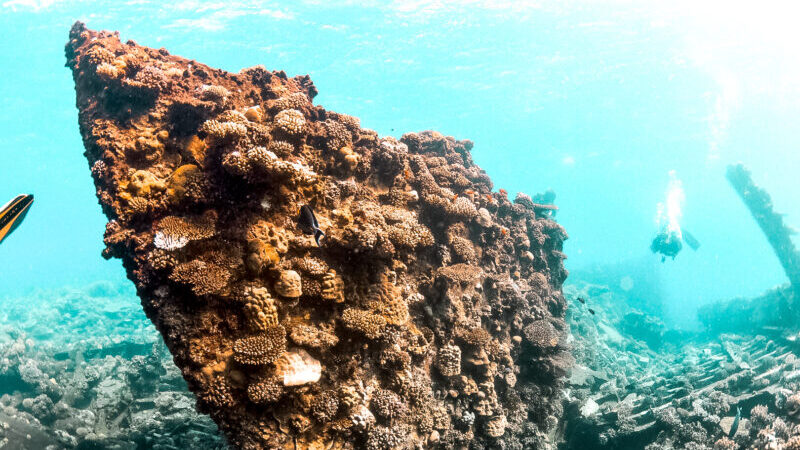

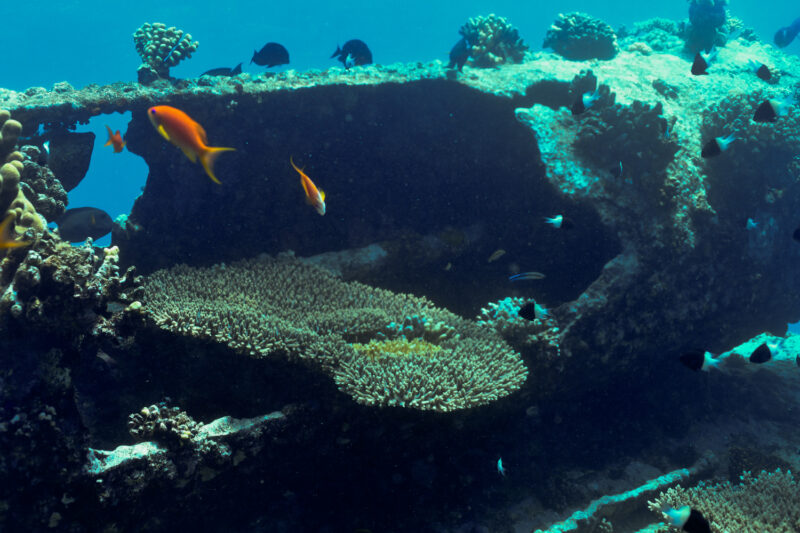
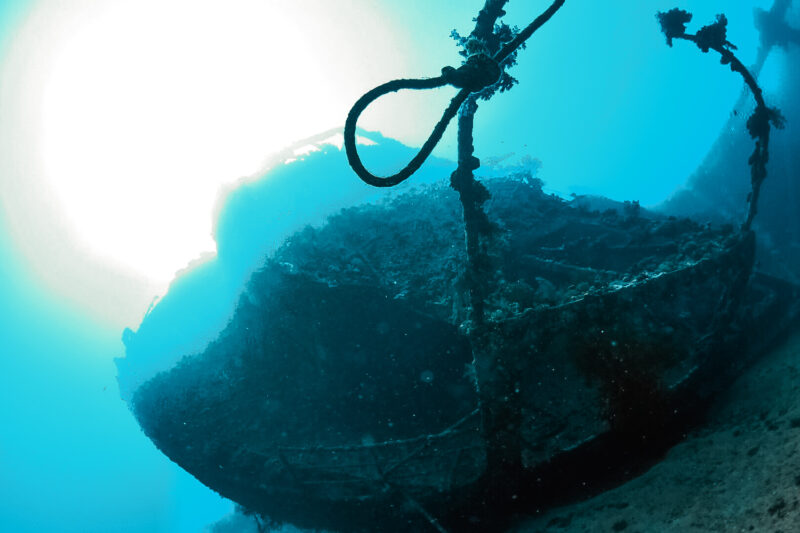
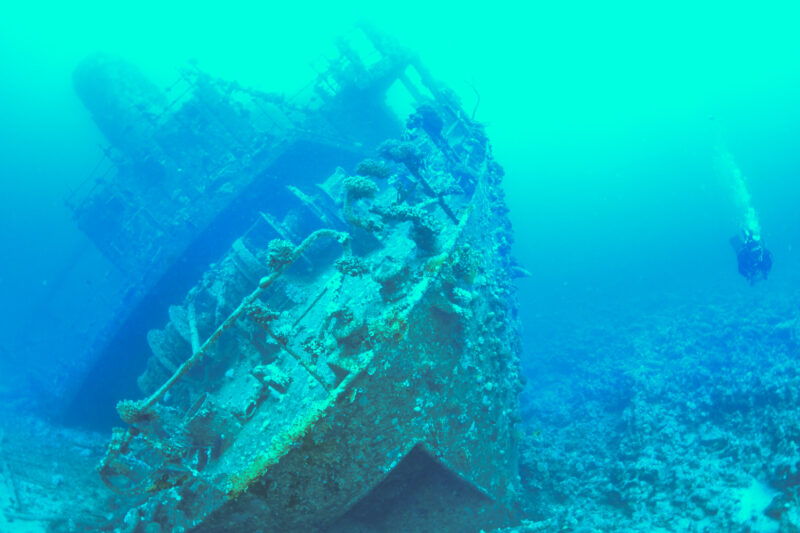
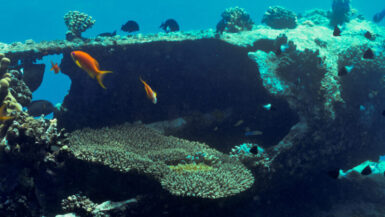
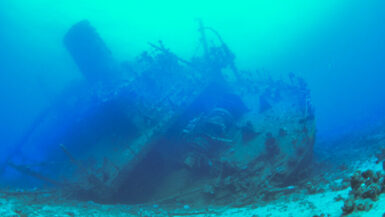
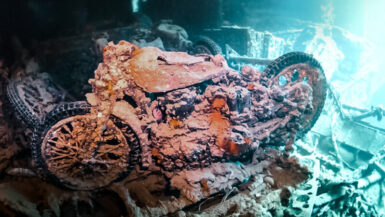
[…] Wrecks of the Red Sea […]
[…] Kingston is diving history. The oldest wreck in the Red Sea, there is little that remains other than the boilers. Dive amongst all the hard and soft corals and […]
[…] D is one of the many wreck dives of the Red Sea located in the Northern portion. Learn about diving Giannis D and how to be best prepared for this […]
[…] K is one of the numerous wrecks in the Red Sea along the northern passage. Learn about what to expect when diving the Chrisoula K, aka “The […]